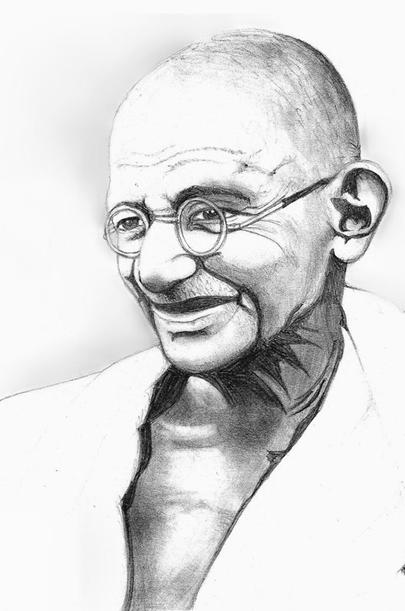Ghandi
Between the end of 1800s and beginning of 1900s, Mohandas Karamchand Ghandi was a political activist in India. India was being controlled by England. His goal was to provide independence to India. He worked really hard for his aim and that’s why, even today, everybody knows him as a symbol of peace, humility and poverty.
Mohandas Ghandi was born in 1869, in Gujarat city of India. His father was also a very well-known politician. They were upper-middle-class as a family. Ghandi was an average student who maintained a strict vegetarian diet. Because of his parents, he got married at the age of 13. His wife was a 14-year-old girl called Kasturba. Two years later, Ghandi’s father died and right after that, he lost his first child as well.
In 1888, Ghandi decided to go to London and study law. Due to his decision, later on he was criticised by his Hindu elders. Before started working in South Africa, he had graduated in 1891 and practiced law in Bombay. It was the place where he started to advocate civil rights first.
Many people from India worked in South Africa as poor labourers, so he felt the racism there. People from other countries who were a different colour were all repressed and that made Ghandi oppose the ways there. He did not accept this and wanted to change it. In the next years, during the Boer War, he found 1,100 volunteers to carry wounded soldiers and help them to receive medical care. Then they were awarded The Queen’s South Africa Medal.
Ghandi’s peaceful protest was called Satyagraha. With his core philosophy, he encouraged people in India and China to disobey the government via protest, but to do it without violence. In this resistance period, many Indians were killed. However, this public outcry made the South African leaders compromise with Ghandi.
Ghandi joined the Indian National Congress when he returned to India in 1915. His aim was still gaining independence from Britain. Britain controlled all of India for almost 100 years. Ghandi believed that he could do it but it had to be without violence. It was in those years when a crowd of peaceful protestors were shot by British troops and killed. More than 300 people were killed and more than 1000 people were wounded. This massacre was named Jallinwala Bagh and Ghandi never wanted to experience the same with his people.
After many years of protests and meetings with World leaders, independence was taken from Britain in 1947. In the last years of his life, he became famous because of hunger strikes he did over civil issues. He was assassinated at the age of 78 by a Hindu nationalist. Ghandi is still an important figure not only in India, but also in the whole World thanks to his non-violent protests for civil rights.
Adapted from Soft Schools website

